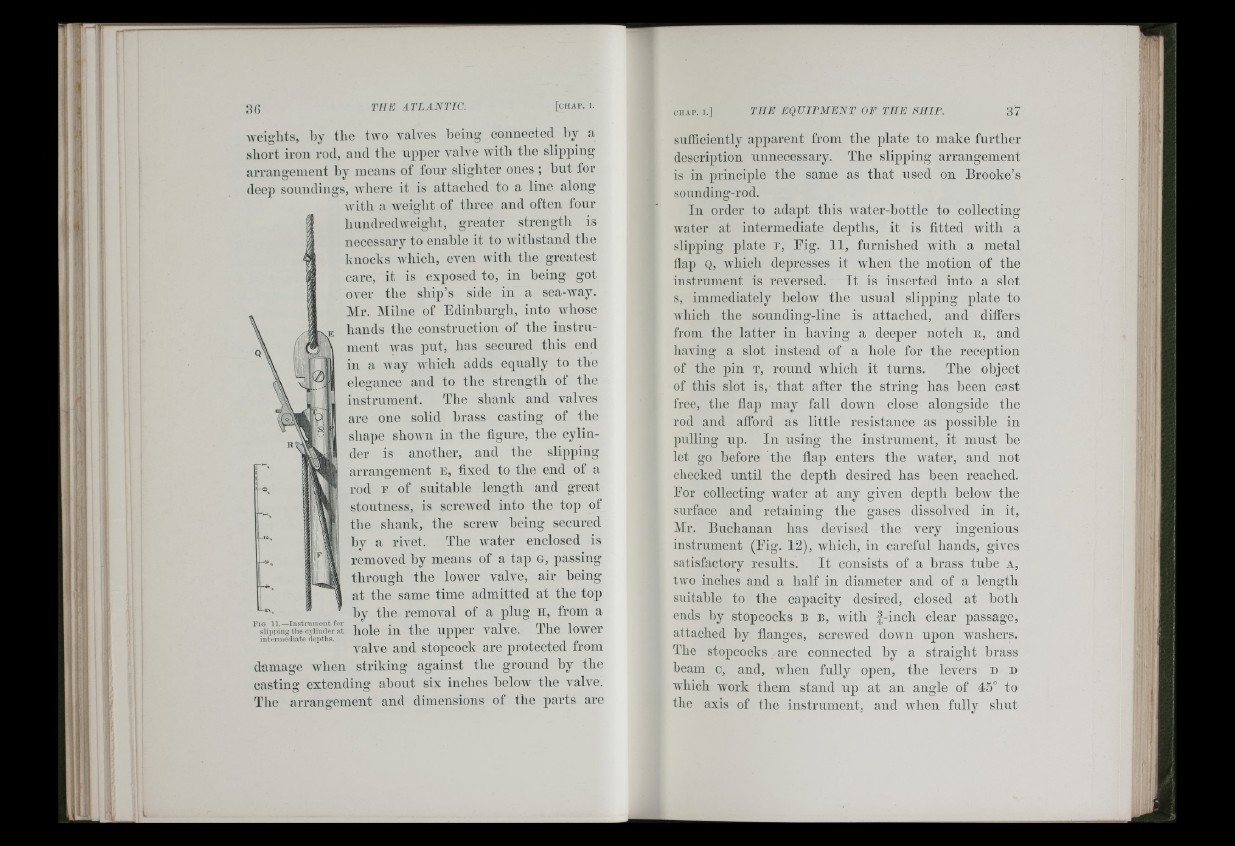
THE ATLANTIC.
Aveiglits, hy the two valves heing connected hy a
short iron rod, and the upper valve Avith the slipping
arrangement by means of four slighter ones ; hut tor
deep soundings, Avhere it is attached to a line along
Avith a Aveight of three and often four
liundredAveight, greater strengtli is
necessary to enable it to Avitlistand the
knocks Avhicli, even with tlie greatest
care, it is exposed to, in heing got
over the ship’s side in a sea-AA’ay.
Mr. Milne of Edinburgh, into Avhose
hands the construction of the instrument
Avas put, has secured this end
in a Avay Avhich adds equally to the
elegance and to the strength of the
instrument. The shank and valves
are one solid brass casting of the
shape shoAvn in the figure, the cylinder
is another, and the slipping
arrangement E, fixed to the end of a
rod E of suitahle length and great
stoutness, is screwed into the top of
the shank, the screAv heing secured
hy a rivet. The water enclosed is
removed hy means of a tap g, passing
1 through the loAver valve, air being
at the same time admitted at the top
hy the removal of a plug h, from a
F ig 11.—In s trum e n t for , ' , . , , . r , t l 1 slipping the cylinder at holo 111 tlio uppcr valvc. ilie iowcr
iiiteriiiediiite depths. i . n j? valve and stopcock are protected trom
damage Avhen striking against the ground hy the
casting extending ahout six inches heloAv the valve.
The arrangement and dimensions of the parts are
sufiiciently apparent from the plate to make further
description unnecessary. The slipping arraugement
is in principle the same as that used on Brooke’s
sounding-rod.
In order to adapt this Avater-hottle to collecting
AA’ater at intermediate depths, it is fitted wuth a
slipping plate p, Eig. II , furnished with a metal
flap Q, Avhich depresses it Avhen the motion of the
instrument is reversed. It is inserted into a slot
s, immediately heloAv the usual slipping plate to
AAhich the sounding-line is attached, and differs
from the latter in having a deeper notch u, and
having a slot instead of a hole for the reception
of the pin t, round Avhich it turns. The object
of this slot is, that after the string has heen cost
free, the flap may fall doAvn close alongside the
rod and afford as little resistance as possible in
pulling up. In using the instrument, it must he
let go before the flap enters the Avater, and not
checked until the depth desired has been reached.
For collecting water at any given depth heloAv the
surface and retaining the gases dissolved in it,
Mr. Buchanan has devised the very ingenious
instrument (Eig. 12), which, in careful hands, gives
satisfactory results. It consists of a brass tuhe a,
two inches and a half in diameter and of a length
suitahle to the capacity desired, closed at both
ends hy stopcocks B B, Avith f-inch clear passage,
attached hy flanges, screwed doAvn upon washers.
The stopcocks are connected hy a straight brass
beam c, and, Avtien fully open, the levers d d
AA’hich work them stand up at an angle of 45° to
the axis of the instrument, and Avhcn fully shut